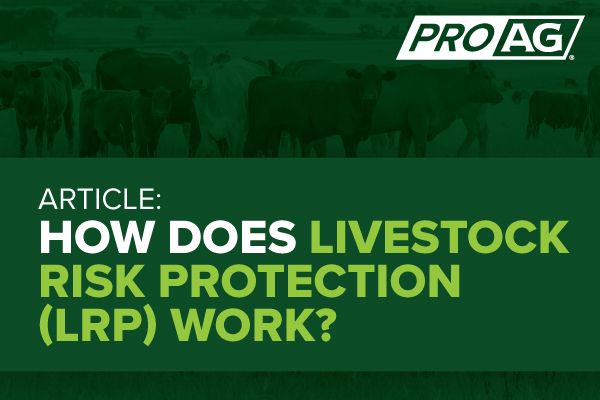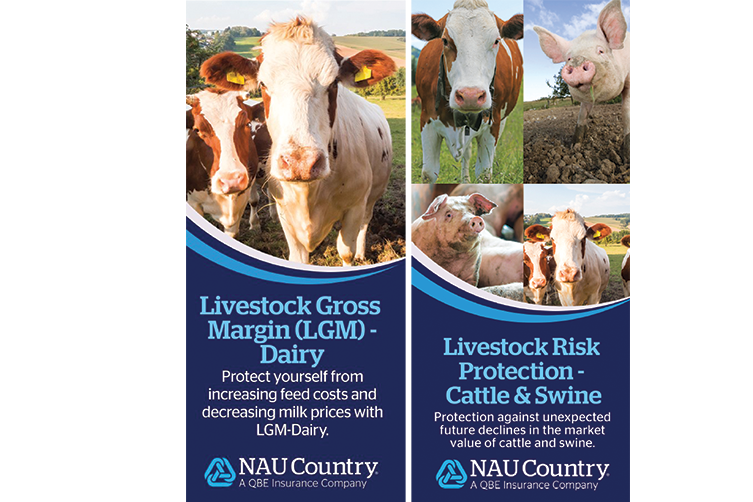Equip Your Business: Bagley Risk Management Insights
Equip Your Business: Bagley Risk Management Insights
Blog Article
Secret Variables to Think About When Choosing Livestock Threat Defense (LRP) Insurance
When assessing choices for Livestock Threat Security (LRP) insurance, numerous essential aspects warrant mindful factor to consider to guarantee effective risk monitoring in the agricultural market. Picking the ideal protection alternatives customized to your certain livestock procedure is critical, as is understanding exactly how superior costs associate with the degree of defense provided. In addition, the qualification standards for various types of livestock and the versatility of the plan to adjust to altering scenarios are vital components to weigh. The performance and transparency of the cases procedure can significantly impact the overall experience and financial end results for livestock manufacturers. By strategically browsing these crucial factors, manufacturers can guard their investments and minimize potential threats successfully.
Insurance Coverage Options
When considering Animals Danger Security (LRP) insurance, it is essential to recognize the numerous protection choices available to reduce dangers in the farming industry. Animals Threat Protection (LRP) insurance offers different protection alternatives customized to meet the varied requirements of livestock producers.
One more essential coverage alternative is the recommendation duration, which figures out the length of time the insurance coverage is in result. Producers can select the recommendation period that best matches their production cycle and market problems. In addition, coverage levels and prices differ based upon the sort of livestock being guaranteed, giving producers the flexibility to customize their insurance prepares according to their particular needs.
Comprehending the different insurance coverage choices readily available under Livestock Danger Defense (LRP) insurance is critical for producers to make educated decisions that properly secure their livestock procedures from market unpredictabilities.
Premium Costs

Animals Danger Security (LRP) insurance supplies essential insurance coverage choices tailored to minimize threats in the farming industry, with a considerable element to think about being the computation and structure of premium prices. When determining premium costs for LRP insurance coverage, several factors enter into play. These include the kind and variety of animals being insured, the protection level selected, the present market value, historical price data, and the size of the protection period. Insurers might additionally think about the location of the farm, as geographic elements can influence the general risk account.
Insurance companies examine historical data on livestock rates and manufacturing costs to determine an appropriate premium that mirrors the degree of danger included. It is important for animals producers to thoroughly assess premium expenses and insurance coverage options to ensure they are sufficiently shielded against possible financial losses due to damaging market problems or unanticipated occasions.
Qualified Livestock
The determination of eligible animals for Livestock Risk Protection (LRP) insurance policy protection entails cautious consideration of specific standards and features. Animals kinds that are normally eligible for LRP insurance coverage include feeder cattle, fed lambs, swine, and livestock.
Feeder livestock, for instance, are typically eligible for LRP coverage if they fall within defined weight arrays. Fed cattle may also be qualified, but check out this site they have to meet specific weight and quality grade needs. Swine eligible for protection usually consist of market weight pets intended for slaughter. Lambs are an additional classification of livestock that can be considered for LRP insurance coverage, with factors such as weight and age playing a critical function in establishing their qualification.
Before picking LRP insurance coverage for animals, manufacturers must carefully review the eligibility requirements laid out by the insurance provider to guarantee their pets satisfy the necessary requirements for coverage.
Policy Versatility
Policy versatility in Animals Danger Defense (LRP) insurance enables producers to customize insurance coverage to match their details requirements and run the risk of monitoring methods. This versatility encourages livestock manufacturers to tailor their insurance plan based on elements such as the kind of livestock they have, market conditions, and private risk resistance levels. One essential aspect of plan flexibility in LRP insurance is the capability to select protection levels that straighten with the producer's financial goals and take the chance of exposure. Producers can pick insurance coverage levels that shield them versus prospective losses due to variations in animals rates, guaranteeing they are adequately guaranteed without overpaying for unneeded coverage. Furthermore, LRP insurance coverage offers versatility in policy duration, permitting manufacturers to choose insurance coverage periods that finest fit their manufacturing cycles and marketing timelines. By providing adjustable choices, LRP insurance makes it possible for producers to effectively manage their threat exposure while guarding their animals operations against unexpected market volatility.
Claims Process
Upon experiencing a loss or damage, manufacturers can initiate the claims process for their Animals Risk Security (LRP) insurance by immediately contacting their insurance company. It is critical for manufacturers to report the loss asap to quicken the claims process. When getting to out to the insurance provider, producers will certainly need to offer comprehensive information regarding the case, including the day, nature of the loss, and any kind of relevant documentation such as veterinary documents or market prices.

After the assessment is full, the insurance copyright will choose pertaining to the case and communicate the outcome to the manufacturer. If the case is approved, the producer will get compensation according to the regards to their Livestock Threat Protection (LRP) insurance plan. Bagley Risk Management. It is necessary for producers to be accustomed to the insurance claims process to ensure a smooth experience in the event of a loss

Verdict
In conclusion, when picking Animals Danger Protection (LRP) insurance policy, it is necessary to think about protection alternatives, premium expenses, qualified livestock, policy versatility, and the insurance claims process. These vital factors will assist make sure that farmers and ranchers are effectively protected versus possible dangers and losses related to their animals procedures. Making an educated decision based upon these factors to consider can ultimately result in better economic safety and assurance for animals manufacturers.
Livestock Danger Defense (LRP) insurance supplies different coverage choices tailored to satisfy the varied demands link of livestock producers.The resolution of eligible animals for Animals Threat Protection (LRP) insurance policy coverage involves mindful factor to consider of details standards and attributes.Plan adaptability in Livestock Risk Security (LRP) insurance coverage enables manufacturers to tailor insurance coverage to fit their particular demands and take the chance of monitoring techniques.Upon experiencing a loss or damages, producers can start the claims procedure for their Livestock Danger Security (LRP) insurance policy by immediately contacting their insurance provider.In final thought, when selecting Animals Risk Security (LRP) insurance coverage, it is important to think about insurance coverage choices, premium expenses, qualified animals, plan adaptability, and the cases process.
Report this page